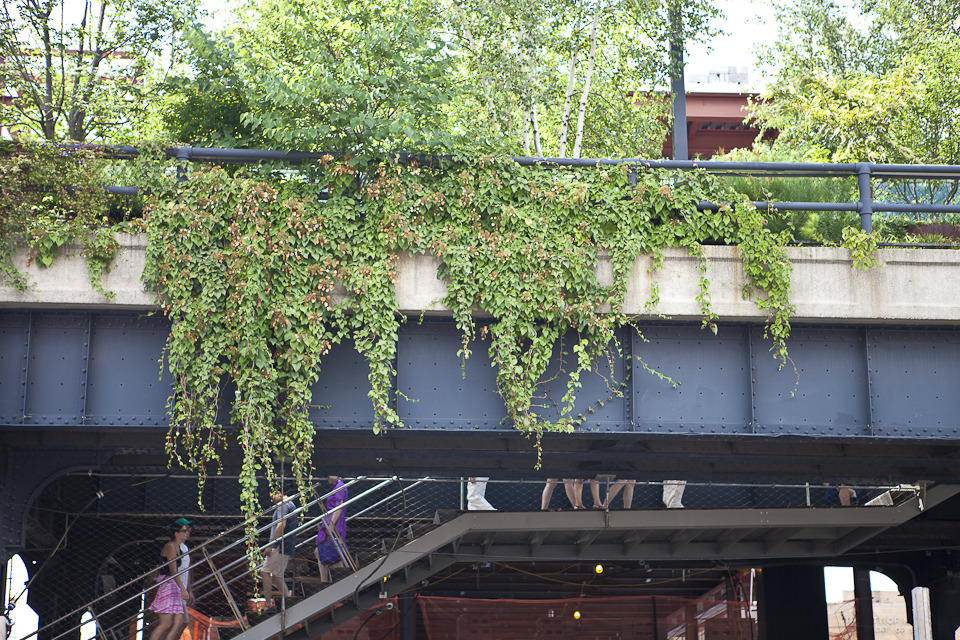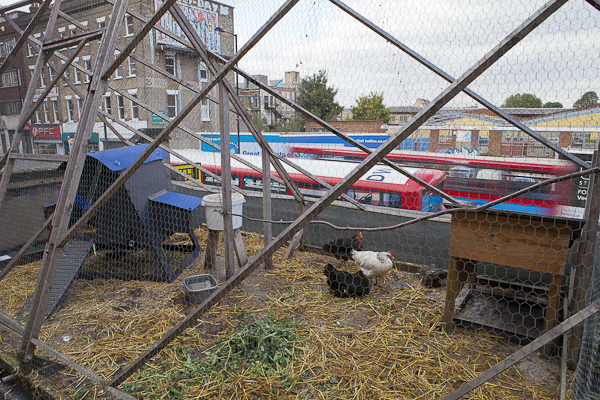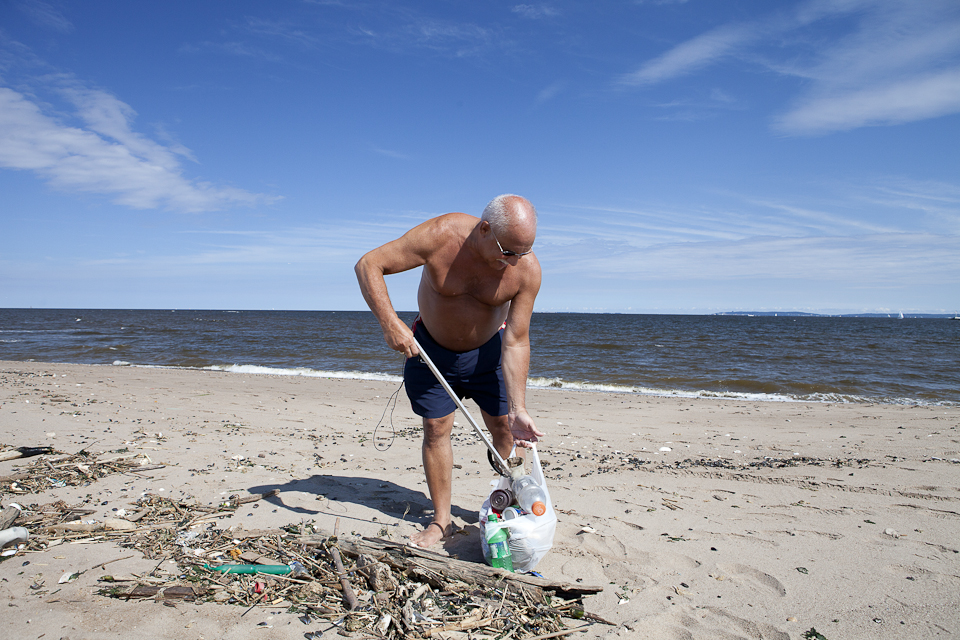
New York and the borough of Manhattan, in particular, is a high-rise city where the eye is constantly drawn above street level to gaze at gleaming towers and glittering lights. It is rather apt then that the latest addition to the city skyline should also rise above the heads of passing pedestrians. The High Line stretches along an abandoned rail freight line for almost 1.5 miles along Manhattan’s West Side. It is a creative response to the challenge of increasing urbanization and competition for precious land resource in our cities. The High Line is a prime example of industrial regeneration that has found new use for an outdated transport system by transforming it into a valuable piece of green infrastructure.
However, the High Line is hardly a new concept. It is an idea “borrowed” from the French and effectively a modern day gift from France to the American people just as the Statue of Liberty was presented to the American nation in 1886. Opened in 1993, the Promenade Plantee is a 4.5km park along a 19th century railway viaduct in the 12th arrondissement.
Although the High Line website does provide a cursory mention of the earlier Promenade Plantee in Paris, it has firmly rebranded the concept of an “urban linear park” with the Big Apple logo. Now all talk is about New York exporting another cultural icon that other cities are clambering to emulate in some shape or form. In this respect, the High Line has the potential to have an effect far greater than it’s 1.5-mile length.
Let’s not forget about our own urban linear parks in London. The superb 2km long Mile End Park in the East End comes complete with Ecology Centre, Art Pavilion and green bridge over the busy Mile End Road – combining educational, cultural, transport and leisure pursuits seamlessly. Or the 4.5-mile long Parkway Walk in North London – longer than either the High Line or Promenade Plantee. Opened in 1984, it follows the route of the London and North Eastern Railway line and now serves as London’s largest local nature reserve. On an even grander scale is the Lea Valley Park, which runs from Ware in Hertfordshire to Hackney Wick in East London although strictly speaking, only the section south of Enfield could probably be classed as an urban linear park. The length of a full marathon (26 miles), it will extend into the Olympic Park for a further 2 miles from mid 2013 as part of the new Queen Elizabeth II Park.
But that’s not to say that we should rest on our laurels. The Landscape Institute, Garden Museum and Mayor of London have recently launched “A High Line for London: Green infrastructure ideas competition for a new London landscape” to be judged by the founders of the High Line amongst others. The competition organizers make it clear that they are not seeking a replica but rather aim to capture the spirit of the High Line by engaging communities with green infrastructure. They also put forward a fine definition of green infrastructure, which pays homage to the need for adaptation to climate change –
“Green infrastructure is the network of open and green spaces, including features like green roofs, designed and managed to provide benefits such as flood management, urban cooling, green transport links and ecological connectivity”.
Try as one might, there just isn’t a sizeable length of derelict land in Central London that could capture the imagination and compete on the same world stage as the High Line. The proposal does not need to use an abandoned railroad but presumably it should have an extensive linear form and be located in a high-density urban area. Otherwise what comparison can be made of the High Line at all? I’ve scoured the Internet and have come across several plans for East London in particular. SpaceHive, described as a “funding platform for neighbourhood improvement projects” is championing a green park at Limehouse Curve, a 120m long railway viaduct over Commercial Road. Even the Landscape Institute itself featured an article on their website back in early 2010 with plans for a 1.7 hectare elevated park on the Braithwaite Viaduct in Bishopsgate Goods Yard, Shoreditch.
Neither is particularly exciting or radical in my opinion. If London is looking to make a statement and a lasting contribution to green infrastructure, it needs an iconic symbol in the same vein as the London Eye or the Millennium Dome. After all, this should be about raising the profile of green infrastructure
So I thought to myself, where can I find a piece of disused infrastructure that can be “greened”? Perhaps even an elevated railway track similar to the High Line. Then I remembered some photos I had taken of the city skyline from the London Eye – the giant Ferris-like wheel next to the banks of the River Thames. My eye had been attracted by geometric forms and repeating patterns in the urban landscape beneath me – in particular the tented glass roofs of nearby Waterloo station. Growing from one side is an abandoned 400-metre long glass and steel vaulted structure that disappears behind buildings only to reappear further on.
The five platforms (numbers 20-24) of the former Eurostar terminal have been sitting idle since 13 November 2007 when services moved to St. Pancras International at an estimated cost of £1.2 million per year in security and maintenance. Plans are underway to open up Platform 20 to commuter trains in 2014 but that still leaves the bulk of the station unused 5 years after the departure of the last train. The platforms are now in the ownership of BRB Residuary Ltd, which lies under the auspices of the Department of Transport so presumably Boris has considerable influence over future plans.
So why not develop this prime piece of abandoned real estate for the people of London? In terms of locations, it doesn’t come much more urban or grey concrete than this. The structure resembles a giant greenhouse and with modifications could serve a similar purpose. I’m not suggesting a tropical paradise like the Eden Project in Cornwall – it should showcase plant life native to Britain. Such a huge roof space lends itself to solar power and rainwater harvesting – in the hands of a progressive architectural firm, it could become a model of sustainability and green infrastructure for Central London. It is perfectly positioned to entice nearby tourists from the Southbank and London Eye and to host educational and cultural events. It could serve as a green and pleasant haven for stressed commuters in busy Waterloo station next-door. It could even act as a “therapeutic” route for pedestrians between the station and St. Thomas’s hospital near the west end of the tunnel.
The platforms are now in the ownership of BRB Residuary Ltd, which lies under the auspices of the Department of Transport. With the political will and backing of charismatic London Mayor Boris Johnson, London could steal the green limelight back from New York.
Originally published in 2012



Recent Comments